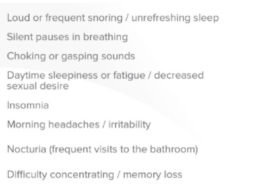
Tips to help you choose a Portable Oxygen Concentrator
Choosing any piece of medical equipment can be extremely confusing and frustrating. The pressure of making the right clinical decision that would impact you or a family member and at the same time being able to get economic value is significant. Hopefully this series looking at equipment specifications will help.
An oxygen concentrator is a device that typically takes in ambient air and concentrates the oxygen by selectively removing nitrogen. An oxygen enriched gas is provided with oxygen levels in the range of 90% and flows from 1 to 10 litres per minute (l/min). It does not require bottles and is normally home based. As a comparison typically, wall piped oxygen would have a flow of 15l/min and high flow up to 60l/min. The amount of oxygen (at 90% O2) needed would depend on what your doctor has prescribed, with most patients needing up to 2l/min to support themselves at home. This is the key starting point as the flow will determine the oxygen saturation in your blood. The best tool to monitor your O2 saturation is a pulse oximeter. The following factors should be considered when choosing a oxygen concentrator:
- Should the unit be based at home or is it to accompany you when leaving your house? This is categorised as fixed (on castors) or portable (usually with backpack or small trolley). Home based units are usually 5 or 10 l/min and are powered directly by electricity. Portable units range from 0.6l/min to 3l/min and are powered by rechargeable batteries. Batteries make portable units more expensive.
- What is the flow rate (l/min) at 90% oxygen? This is critical as this determines whether your machine meets the medical requirements given by your doctor. Irrespective of the “level” buttons or the maximum flow level the key factors is what is the maximum flow l/min at +/-90% Oxygen. Many machines have alarms if the oxygen level drops below 90%. Be cautious if a supplier specifies higher flow rates at less than +/-90% Oxygen.
- Does the oxygen concentrator allow Pulse or Continuous Oxygen delivery?
- Pulse delivery is when you receive a small amount of oxygen every time you take a breath. The machine senses when you breath and releases oxygen at the right time. You still receive the correct selected flow/min at 90% oxygen
- Continuous delivery is when the machine produces 90% oxygen at the flow rate selected irrespective of if you are breathing. Continuous flow is more wasteful but many patients require this. Larger flow machines (home based and +2l/min portable) have continuous flow capability. For a portable machine this is costly from a battery consumption perspective and hence requires a higher performing battery. combination.
- What is the battery life and alternative battery sizes allowing you sufficient activity time. Manufacturers link the battery life to the flow setting level (ie level 2). Therefore, it does require an assessment of what this setting actually means when considering the pulse or continuous flow/min at 90% oxygen. The higher the flow/min (at 90% O2) the shorter the battery life. As an example: Assuming a machine produces 450ml/min Oxygen (90%) at level 2 you should expect the unit to provide at least 3.5 to 4.5hours of use prior to recharge being needed. Some suppliers also provide extended batteries allowing up to 8 hours use. It may mean you need to buy multiple batteries to provide the needed battery time.
- What size and weight can you carry or roll (trolley)? Normally 1l/min portable units will weigh approximately 2-2.5kg. 2l/min units will be 4.5kg and come with trolleys as well. Home based units (5/10 l/min) will weigh approximately 10-15kg and come on castors.
- What are the Manufacturers and Agents track record for repair? You need to assess the global track record of the original manufacturer including if they have a local service organisation and what is the process when the machine needs a warranty repair. Will this be a system replacement or service and repair during warranty. Typically you should expect the warranty period to be 2 years and will be a warranty service/repair. Key spares allowing repair within 2 weeks should be available locally.









Write a Comment